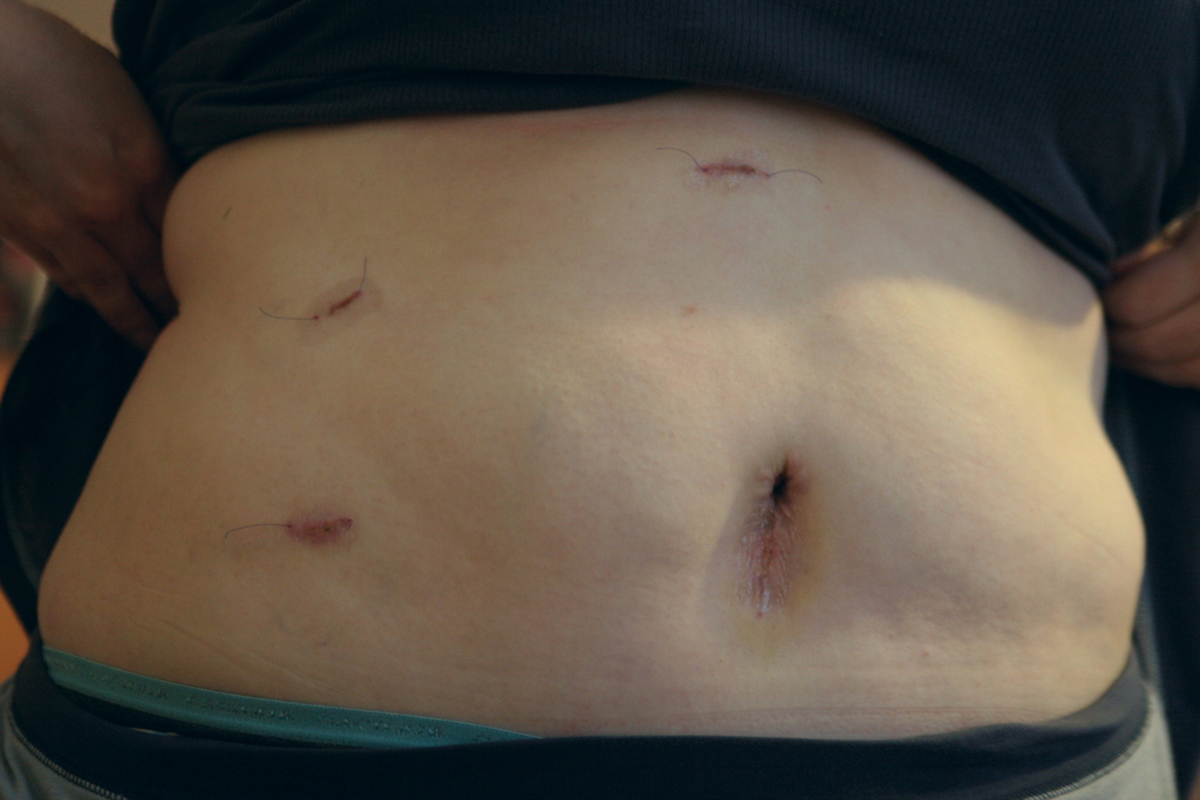Table of Contents
In the United States, about 500,000 people a year have gallbladder removal surgery. About 10 percent of the entire population "could" have gallbladder removal surgery if they were properly diagnosed. Gallbladder disease is more common among people of European, Pima (native American), or Hispanic heritage, and more common in women than in men. In the overwhelming majority of gallbladder removal cases, the doctor removes the gallbladder with a minimally invasive surgical technique called a laporoscopy.
Laporoscopy is done with a laparascope. The surgeon cuts (usually) two small incisions, just 3 mm (about 1/8 of an inch) long, in the belly button and another on the right side of the torso. Before the early 1990's, removing the gallbladder required a long incision (about 6 inches/150 mm in some cases, sometimes even longer) and a lot of manipulation of tissues.

The advantage of the laparoscopic surgical approach to gallbladder removal is that there is greatly reduced gallbladder removal recovery time. The procedure has become day surgery, and patients can be sent home from the recovery room. As soon as two weeks after, patients who underwent a laparoscopic cholecystectomy will be able to return to all their normal daily activities, after which all they'll need to do is focus on making the lifestyle changes that will keep them healthy.
However, to get the easier kind of gallbladder removal surgery, there are some things that it doesn't hurt to keep in mind:
- The longer you wait to go to the doctor, the less likely you are to be able to get a laparoscopy. After about 72 hours from an acute gallstone attack, tissues around the gallbladder become inflamed, so that the surgeon can't see what he or she is doing. When this happens, the older, long-incision method may be required.
- Taking Aspirin for your pain usually isn't a good idea. Even working through the "keyhole," the surgeon still has to tie off blood vessels as they are bleeding. If you take medications that increase bleeding, you give your surgeon more to do.
- If you have had previous abdominal surgery, scar tissue may make it impossible to use the keyhole technique.
- If you are a man, it is more likely (although not very likely, the risk is usually reported as 1.5 to 15 percent) that your doctor will have to switch to a long-incision technique during the operation.
In the process of the surgery, the doctor "blows up" the peritoneum, the layer of connective tissue around the abdominal organs, with a blast of carbon dioxide, inflating it with something like a balloon, so the gallbladder, bile duct, liver, and other organs can be visualized. This procedure has to be done under general anesthesia. When you wake up in recovery, you may look down and wonder if you swallowed a balloon. The area can be swollen, tender, and painful, and you will probably be asked to walk as soon as possible to help move the gas out of your system.
READ Cholecystectomy - Laparoscopic Surgery for Gallbladder Removal
- Donovan JM. Physical and metabolic factors in gallstone pathogenesis. Gastroenterol Clin North Am. Mar 1999. 28(1):75-97.
- McEvoy CF, Suchy FJ. Biliary tract disease in children. Pediatr Clin North Am. Feb 1996. 43(1):75-98.
- Photo courtesy of chris runoff via Flickr: www.flickr.com/photos/azdodsons/2656417854
- Mind map by SteadyHealth.com
- Mind map by SteadyHealth.com

